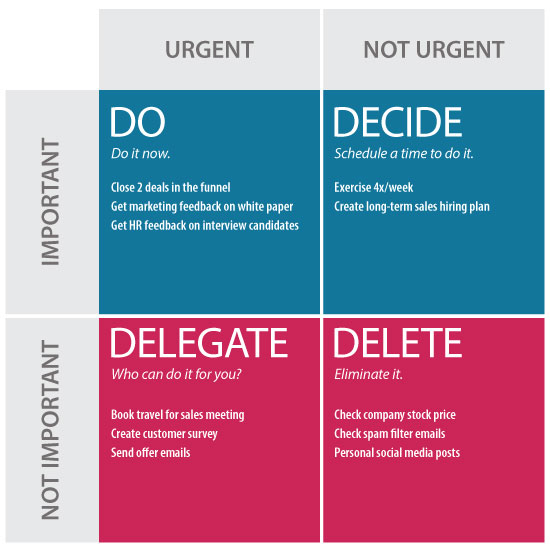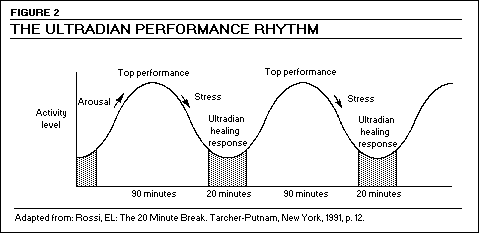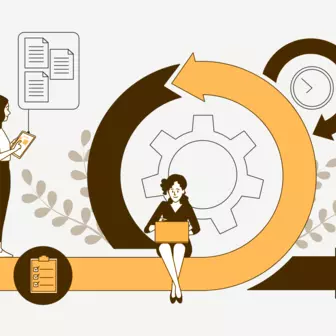Multitasking is always considered to be a proficient thing. Some people can get things done within a flash and some struggle to multitask. However, it has nothing to do with your productivity quotient, you can be considered productive even if you like to finish one given task at a time.
Here’s how the American Psychological Association defines multi-tasking:
“Multitasking can take place when someone tries to perform two tasks simultaneously, switch from one task to another, or perform two or more tasks in rapid succession.”
First of all let’s address procrastination
Procrastination is our common foe. There are a few scientifically researched and proven techniques which help you address the daily procrastination.
Standardize a thing before planning to optimise it. The truth is, a habit must be established before it can be improved. If you can’t learn the basic skill of showing up, then you have little hope of mastering the finer details.
What does it take to be more productive?
Distractions need to be eliminated, use the Eisenhower Box!
When you have too many things vying for your attention, it slows you down and results in lower productivity overall. Do your best to remove every distraction that pulls you off tasks.
Cell phones, email and message apps are the most common drain on productivity. Set the ringer on your phone to vibrate, set specific times for checking email, and close irrelevant browser tabs. With this approach, your work will be less interrupted throughout the day.
About the Eisenhower box!

Using Eisenhower was the 34th President of the United States, serving two terms from 1953 to 1961. He dedicated his presidency to launching programs that would reshape the highway system, bring internet to the masses and kick off space exploration and bring sensitive and careful use of atomic resources.
Here is what his strategy suggests:
The decision matrix above can be separated by actions on the basis of their possibilities: Urgent and important ; tasks that have to be done immediately.
- Important, but not urgent ; the tasks which can be scheduled for a later time.
- Urgent, but not important ; tasks you will get done by someone else.
- Neither urgent nor important (tasks that you will eliminate).
The great thing about this matrix is that it can be used for broad productivity plans and can bring real change to your decision making capabilities.
Figure out your peak hours
From your daily schedule, there must be some or the other time where you think you perform the very best or at the very best of your thoughts or speed etc. You might want to dedicate that time to something or the other which needs some best thought process and efficiency both.
It’s critical that you acknowledge your body’s natural rhythms and align your periods of work and relaxation with them to work in a sustainable productive way.

Just live every other happening on the planet, humans too are cycle-bound. Ultradian research has been a thing lately and a lot of resources are being poured into to know more about the cycles and patterns of human productivity – 90-120 minute cycles that run within the 24-hour circadian day – suggests that our day is driven by cycles that affect how alert and productive we are.
As per the above cycle, we experience peak focus and energy at the beginning of the cycle and it keeps deteriorating over the day due to mental or physical exhaustion happening within us, dude to thinking or even moving around for the matter.
Your to-dos should be verb oriented for a psychological benefit
Agree or not, there is a science behind completing the to-do list. There’s a certain satisfaction in crossing off a task in your daily to-do list. That rewarding jolt of dopamine your brain gets is what pushes you to finish each item on your list. It’s also addictive enough that you want to get the same hit everyday, which is why we keep making lists.
On the flip side, to-do lists can also feel like a chore. Ever had that one item on your to-do list that never seems to get done? It’s like getting an annoying itch that you just can’t reach. This nagging feeling is the result of the Zeigarnik effect.
To-do lists are a great way to help you focus on exactly what you need to accomplish each day. Some people do best with a physical list like a notebook, and others do better with digital tools.
Your list can be as sophisticated, or as simple as you like, but just making a list is not enough. What goes on your list makes all the difference. Every item that goes on your list should be actionable. The trick for this is to make sure there’s a verb. For example, “Smith project” is not actionable enough.
“Deliver user base growth reports to Daniel” sounds more of a concrete task to complete and helps you achieve it via sounding crystal clear.
Always mind the 10-minute rule
Overwhelmed by an unclear or unwieldy task? Break it into 10-minute mini-tasks instead. This can be a great way to take something unmanageable and turn it into something that is achievable.
The beauty of 10-minute tasks is that they can be fit into many parts of your day. When you get into the office in the morning and are feeling fresh, kick off your day with a burst of productivity from a few 10-minute tasks. Losing momentum in the afternoon? A 10-minute job can help you regain your momentum.
Remember taking some time off; short breaks
Another drain on productivity is the urge to keep pressing ahead on a task to complete it without taking a break. Suddenly you feel really fatigued, or hungry, and you realize you haven’t gone to the bathroom in hours! Your concentration is affected, and therefore your productivity decreases.
Set benchmarks for taking breaks and stick to them. For example, commit to once per hour to get up and move around for 5 minutes. If you’re pressed for time, stand up and stretch for 2 minutes. Changing the position of your body and focusing on the present moment will help to relieve any mental tension that has built up in your mind.
Stay away from the time - poverty trap
Time is limited and time poverty is just an idea. How you choose to spend the time you have in each day is what’s important. When you develop new, healthy habits, you’re able to increase your productivity, and direct your time in the ways that give the most value.
Subscribe
Related Blogs
Exploring Drupal's Single Directory Components: A Game-Changer for Developers

Web development thrives on efficiency and organisation, and Drupal, our favourite CMS, is here to amp that up with its…
7 Quick Steps to Create API Documentation Using Postman

If you work with API , you are likely already familiar with Postman, the beloved REST Client trusted by countless…
What is Product Engineering Life Cycle?

Imagine constructing a house without a blueprint or a set of plans. It will be challenging to estimate the cost and labor…




